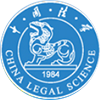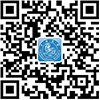摘要(Abstract):
2012年《刑事诉讼法》修改增加的非法证据排除规则实施一年多来有许多经验可以总结,本文研究了我国非法证据排除规则实施以来存在的若干重大问题,包括非法证据的范围、非法证据排除的操作程序、非法证据排除的证明责任、非法证据排除的认定标准等,毒树之果是否排除等等,并对完善我国非法证据排除规则作出了具体建议。
关键词(KeyWords):
Abstract:
Keywords:
基金项目(Foundation):
作者(Author): 杨宇冠;陈子楠;
Email:
参考文献(References):
- 1 Entered into force on 26 June 1987;see General Assembly resolution 39/46 of 10 December 1984,annex,art.2,Official Records of the General Assembly,Thirty-ninth Session,Supplement No.51(A/39/51),197.
- 2 Entered into force on 23 March 1976;see General Assembly resolution 2200 A(XXI),of 16 December 1966,annex,art.7;Official Records of the General Assembly,Twenty-first Session,Supplement No.16(A/6316),p.52,and United Nations,Treaty Series,vol.999,171.
- 3 YANG YUGUAN,UNITED NATIONS HUMAN RIGHTS TREATY BODIES AND THEIR COMMENTS,at 209(Publishing House of People’s public Security University of China,2005).
- 4 Weeks v.the United States,232 U.S.383(1914).
- 5 Miranda v.Arizona,384 U.S.436(1966).
- 6 Adopted by the Eighth United Nations Congress on the Prevention of Crime and the Treatment of Offenders,Havana,Cuba,27 August to 7 September 1990.
- 7 YANG YUGUAN,THE INFLUENCE OF THE HUMAN RIGHTS LAW ON THE CRIMINAL JUSTICE REFORM IN CHINA,at 236(China Legal Publishing House,2008).
- 8 In foreign countries,the courts,specifically superior courts and the Supreme Court,usually play a major role in suppressing illegal evidence.Many classic cases in the development of American exclusionary rule are established by the United States Supreme Court;for example,Boyd v.United States,Weeks v.United States,and Miranda v.Arizona.See YANG YUGUAN,STUDY ON THE EXCLUSIONARY RULE,at 22(Publishing House of People’s public Security University of China,2002).
- 9 During the exclusionary rule pilot project in Yancheng,Jiangsu Province,in 2010,no investigator has ever admitted the existence of torture,which is usually against the testimony of the defendants at court.
- BIAN JIANLIN,YANG YUGUAN,EMPIRICAL STUDY ON THE EXCLUSIONARY RULE IN CHIAN,at 342(China University of Political Science and Law Press,2012).
- More information about the“fruit of the poisonous tree”,See YANG YUGUAN,STUDY ON THE EXCLUSIONARY RULE,at 64(Publishing House of People’s public Security University of China,2002).
- In American criminal procedure,the exceptions for the“fruit of the poisonous tree”are mainly:(1)Purged Taint Exception;(2)Attenuated Connection;(3)Independent Source.
- Long Zongzhi,The Ethical Boundaries between Deception and Criminal Justice,4 Chinese Journal of Law 96,104(2002).
- The Convention against Torture and Other Cruel,Inhuman or Degrading Treatment or Punishment didn’st list types of torture,but prescribed in Article 1 that“any act by which severe pain or suffering,whether physical or mental,is intentionally inflicted on a person”and“when such pain or suffering is inflicted by or at the instigation of or with the consent or acquiescence of a public official or other person acting in an official capacity.”Article 7 of the International Covenant on Civil and Political Rights prescribed that“No one shall be subjected to torture or to cruel,inhuman or degrading treatment or punishment.In particular,no one shall be subjected without his free consent to medical or scientific experimentation.”And The UN Human Rights Committee pointed out that“The Covenant does not contain any definition of the concepts covered by article 7,nor does the Committee consider it necessary to draw up a list of prohibited acts or to establish sharp distinctions between the different kinds of punishment or treatment;the distinctions depend on the nature,purpose and severity of the treatment applied.”
- The Istanbul Protocol:Manual on the Effective Investigation and Documentation of Torture and Other Cruel,Inhuman or Degrading Treatment or Punishment is intended to serve as international guidelines for the assessment of persons who allege torture and ill-treatment,and for investigating cases of alleged torture and for reporting findings to the judiciary or any other investigative body.
- For example,Paragraph 206 of the Istanbul Protocol described that“Suspension can be applied in various forms:(a)Cross suspension.Applied by spreading the arms and tying them to a horizontal bar;(b)Butchery suspension.Applied by fixation of hands upwards,either together or one by one;(c)Reverse butchery suspension.Applied by fixation of feet upward and the head downward;(d)“Palestinian”suspension.Applied by suspending the victim with the forearms bound together behind the back,the elbows flexed 90 degrees and the forearms tied to a horizontal bar.Alternatively,the prisoner is suspended from a ligature tied around the elbows or wrists with the arms behind the back;(e)“Parrot perch”suspension.Applied by suspending a victim by the flexed knees from a bar passed below the popliteal region,usually while the wrists are tied to the ankles.”
- Fan Chongyi,Research Report on the Implementation of the New Criminal Procedure Law by the People’s Procuratorate in Hebei Province,3 Journal of National Prosecutors College 3,18(2014).
- Min Chunlei,Research Report on the Implementation of the New Criminal Procedure Law by the People’s Procuratorate in Northeast China,3 Journal of National Prosecutors College 33,53(2014).
- The China University of Political Science and Law has conduct a pilot project on the exclusionary rule with courts in Yancheng,Jiangsu Province,and published the Yancheng City Intermediate People’s Court Exclusionary Rule of Illegally-Obtained Evidence in Criminal Procedure(Pilot Rules).See BIAN JIANLIN,YANG YUGUAN,EMPIRICAL STUDY ON THE EXCLUSIONARY RULE IN CHIAN,at 3(China University of Political Science and Law Press,2012).

